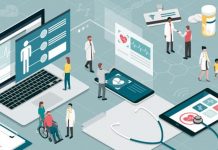This article is written by Souradh C.Valson from Government Law College, Thiruvananthapuram. This article discusses the convergence of bio, nano, and information technology.
Table of Contents
Introduction
Nature has witnessed the growth and evolution of a complex and adaptive system of performing biological functions. For example, the human cell can collect information with nanoscale sensors. These molecular activities gave inspiration to a new engineering approach: nano, bio, and information technology.
With nanotechnology, the production of nanodevices is possible. Advancements in biotechnology allow scientists to control and manipulate biomolecules. Information technology provides a structure to collect and store large amounts of data.
The fusion of nano, bio and information technology is going to create a lot of new opportunities and challenges. It will also help us push the boundaries of human engineering.
The earlier promise for biological applications
‘Nanomedicine’ is the use of nanotechnology in medicine. Various universities and research companies are exploring the use of nanotechnology to construct better diagnostic tools, study diseases at a nanoscale and as a better drug delivery system. In the immediate future, nanotechnology will influence the treatment of the following disorders:
Environmental Disorders: Poor environmental condition is the main cause of diseases in underdeveloped countries. Dumping of toxic waste and pollution is already causing many new diseases. With nanotechnology, microbots that eat toxic waste could plastic could help solve waste management problems. Advances in nanotechnology will also help countries tackle new threats like bioterrorism.
Developmental Disorders: Nanotechnology will help in the treatment of non-genetic disorders such as congenital illnesses and developmental problems, enhancing the food supply, and preventing human contact with toxic chemicals.
Degenerative disorders: Although a cure for degenerative diseases such as ageing, trauma, and autoimmune diseases is possible with nanotechnology, more research and developments are required. This will replace the outdated system of merely suppressing symptoms to completely curing the disease.
Nanotechnology can develop both the diagnostic and therapeutic aspects of medicine. In the short term, nanotechnology could replace the existing techniques with a more specific and sensitive approach. This could make lab testing more accessible and cheaper. In the midterm, changes such as an integrated diagnostic system with the body and the use of a defence system that can detect and treat bodily problems when they arise. Developments in nanotechnology will enhance the delivery of drugs and create a new system that targets and kills unwanted cells.
Nature’s model for bio, nano and information fusion: living cell
The fundamental unit of a living organism is the cell, which is a spectacular, self-organized system to carry out the complex process of life. Millions of macromolecules such as proteins, nucleic acid, carbohydrates, and lipids, make up the cell. The sizes of these macromolecules range anywhere from one to tens of nanometers. All these microscopic structures self organize and interact with each other inside a small fluidic enclosure to make the cell living. The size of the cell ranges from 1-100 micrometres.
Cellular activity is the movement of the macromolecular structures for inter and intramolecular transfer. For cellular activity, the cells have to observe their molecular surroundings and responses, analyze the incoming signals through information analysis, and send an ideal response to it. The main aim of the cell is to ensure the survival of the cell by modifying its external surroundings to create an optimal condition.
These complex molecular activities, by the cell, are achievable only through a complex network of information processing between the cells and thereby making it an ideal model for bio, nano, and information fusion.
Core technologies for studying bio, nano, and information technology
Developing devices that can control and interact with these micro biomolecules is necessary for its study. Micro-electromechanical systems technology (MEMS) enables the design and creation of sensors that can interact with the nanostructures. With the modern transducers, the range of application of these devices has expanded. These micro/nano (MEMS/NEMS) structures enhance the abilities of the cell. Digital nanofluidics, optoelectronic tweezers, and superlens nanoscopes are the core technologies used for the study of converging bio, nano, and information technology.
Digital nanofluidics: Cells are present in a liquid medium. Fluid technology is necessary for any biotechnical research. The complex interaction between biomolecules and devices makes their study challenging. In the early 1990s, to overcome this problem, several new methods and manufacturing techniques were developed. The most important innovation was the use of force fields such as hydrodynamic pressure, electrokinetic force, and surface tension to generate fluid motion in nanotubes. On the principle that pressure difference would force the movement of fluids, a group of scientists developed a polymer manufacturing technique to create a fully-functional microfluidic system. Surface tension is only prominent as small droplets. Scientists devised a new method that uses the difference in surface tension to move droplets.
Opto Electronic Tweezers: OET uses dielectrophoresis by an optical image to control nanoparticles, such as an individual cell. This process uses very little power to prevent a disruption in the functioning of the cell to prevent any damage.
Superlens Nanoscope: The limitations of the electron microscope led to the invention of the superlens nanoscope. A nanometer-thin slab prevents the loss of light, which makes the objects in the nanometer range more visible. This nanoscope can capture images below a spatial resolution of 60nm.
Legal provisions involved and its impact
After China and the US, India has the highest number of publications on nanotechnology. The government has allotted Rs.1000 Crs through the Nano mission to improve and develop nanotechnology. DST (Department of science and technology) has also played a significant role in expanding nanotechnology in India.
The absence of risk analysis and a regulatory framework continues to restrict the development of nanotechnology in India. 95% of the researchers practising in the fields of nanoscience and technology have acknowledged ethical dilemmas in the field of nanotechnology. The undetectable nature of nanotechnology makes it ideal as a weapon in wars or for enhancing performance in humans. Without proper evaluation of the usage risk, companies continue to sell Insecticides and other chemicals with nanoparticles.
Currently, there is no legislation to regulate nanotechnology in India. The Information Technology Act,2000, governs the law relating to the offences and punishment for crimes relating to information technology. The Drugs and Cosmetic Act, 1940 deals with medical devices, delivery systems, and diagnostics. However, it does not define or include nanomedicine.
Many new initiatives such as guidelines for safe practice and the use of nanomaterials by the Nano mission and Nano-SHE ( Nanomaterials Application and Impact on Safety, Health, and Environment) is an initiative taken CSIR (Council for Scientific and Industrial Research) to evaluate the adverse effects of nanomaterials Integrating nano, bio, and information technology will help us in many ways but also brings with it certain risks. A radical change like this may cause instability to human development. To prevent anything like that from happening, anticipatory policies addressing the societal impacts are necessary. Policy guidelines should include the following points:
- To accelerate the techno-economical developments using NBIC (Nano, Bio and Information technology), establishing a long term scientific and engineering framework is necessary. The governments must ensure the availability of investigative tools, knowledge creation, and viable manufacturing methods that support the various NBIC components.
- Identifying the gaps in research and development is essential to understand and resolve the problems.
- Using incentives for production and investments to improve the existing technologies of nano, bio, and information technology for better results and a quicker and smoother transition into a future with converged technology.
- There is a need for more dialogues and discussions about the short term and long term implications due to the advancements in the fields of nano, bio, and information technology.
- There is a need to reevaluate the method to measure the contribution of NBIC. Proper criteria include measuring the quality in the life of people, better working conditions, and infrastructure.
- There is a need for the responsible development of NBIC, along with addressing the needs of humans from different perspectives.
- With converging technologies becoming more common, there is a need for more skilled workers from different disciplines for faster progress. Adopting an interdisciplinary approach in the curriculum could help this.
- Promoting the partnership between colleges, companies, and the government is necessary for accelerating the growth of NBIC.
- Updating the legal system about the new inventions and discoveries to prevent any possible legal violation.
- Collaboration between national and international agencies is necessary for exchanging ideas and information about discoveries.
Short and long term issues
Converging technologies are definitely the future. There are some important short-term issues such as protecting the safety of the people and the environment. The participation of public, private, and social sectors is necessary to develop new markets and to improve the existing technology. Governments and private companies should cooperate to assess and manage risk.
Long term issues are related to broader problems. These issues require time to change and, the governments, along with other organizations, should ensure controlled and responsible growth. For responsible growth, governments and companies must follow guidelines such as:
- Technology should grow, respecting human nature, cultures, and values. The use of technology is to help human growth.
- Fundings and investments should not exceed a reasonable amount. Equitable distribution of benefits is also crucial for balanced development.
- Adjusting to the new technology will take some time. The existing socio-economic conditions and legal systems require changes to include new technologies.
Opportunities and challenges
Nano Bio and Information (NBIC) technology offers many new options to our society, but these innovations must ensure cost-effectiveness, quality of service, and equal access to all. Integrating technology will have a major impact on the healthcare and energy industries. The future is an Innovation economy, we can solve the problems around the world that threaten the peace and stability of nations with the help of innovation and integration of technologies.NBIC a key component of the Innovation Economy. Let us take a look at how NBIC fits into the innovation economy.
Nanotechnology: The ability to design matter at the nanoscale will change the way goods are manufactured, resulting in a shift in the supply and market chains.
Information technology: Information technology is the backbone of innovation and helps to record, analyze, and share innovation.
Bioscience: Integration of technology with biology has already expanded the scope of biosciences by creating better medicines, disease prevention, and increasing agricultural output.
Cognitive science: Companies like Neuralink are already trying to understand the process of merging technology with the human brain.
The following are the key opportunities presented by NBIC:
- Acceleration of inventions and discoveries.
- Low-cost production of high yielding products.
- Increasing the capacity and capabilities of humans.
- Producing new tools for efficiency.
- Creation and access to newer markets.
- Improving the quality of life.
- Making education and learning more globalized and accessible.
Seizing the opportunities will provide competitive advantages to countries and businesses.
At the same time, we should also realize that NBIC may not be the solution to all our problems. “A tool is only as good as its user”, therefore, the pioneers in science and technology must try to aim for global upliftment and benefit of society. If these technologies are used to meet the self-interests of private individuals and corporations, they may have disastrous effects.
Important case laws
The application of NBIC in forensic science will greatly benefit crime investigations. Forensic Science applies the knowledge and methodology of various disciplines of science into legal matters. It involves the use of multiple disciplines such as computer science, DNA profiling, medicine, engineering, physics, forensic chemistry, and biology.
In the Nitish Katara murder case, the use of DNA profiling helped the police to identify the deceased and uphold the conviction of the trial court.
In Sushil Mandal v. The State, the petitioner challenged the validity of the findings made by DNA profiling. The petitioner was the father of the deceased, who was an adolescent boy who was infatuated with a girl from his class. The school administration warned both the parents to check on the kids. A few weeks later his body was found washed up on a lake. The father did not identify the body. He subsequently filed a habeas corpus. The DNA profiles of the body matched with the father and the court upheld the validity of DNA profiling.
In Daubert v. Merrell Dow Pharmaceuticals, Inc, the U.S Supreme Court laid down the guidelines for the admissibility of scientific evidence collected using a new method. They are:
- Whether the used technique or method can be or has been tested.
- Whether the theory has been published or subject to peer review.
- Whether the theory has a high chance of error.
- Whether the theory is accepted in the scientific community.
In Anmolsingh Swarnsingh Jabbal v. The State of Maharashtra, the Bombay high court relied on DNA profiling along with other evidence to convict the murderer of a young woman engineer.
Conclusion
As we have seen, the convergence brings with it a lot of opportunities and challenges. We must realize that the convergence of bio-nano and informational technology is the future and prepare for that change.
References
- Vishal Yadav v. State of Uttar Pradesh (2014) SCC Online Del. 1373.
- Inspector of Police v. John David (2011) 5 SCC 509
- 509 U.S. 579, 590, 594 (1993)
- 1 2014 SCC Online Bom 397: 2014 (2) Bom CR (Cri) 361: MANU/MH/0352/20
- https://www.ncbi.nlm.nih.gov/pmc/articles/PMC2953859/#:~:text=Nanotechnology%20has%20enabled%20the%20production,proteins%20to%20possess%20novel%20functionalities
LawSikho has created a telegram group for exchanging legal knowledge, referrals and various opportunities. You can click on this link and join:
 Serato DJ Crack 2025Serato DJ PRO Crack
Serato DJ Crack 2025Serato DJ PRO Crack











 Allow notifications
Allow notifications



